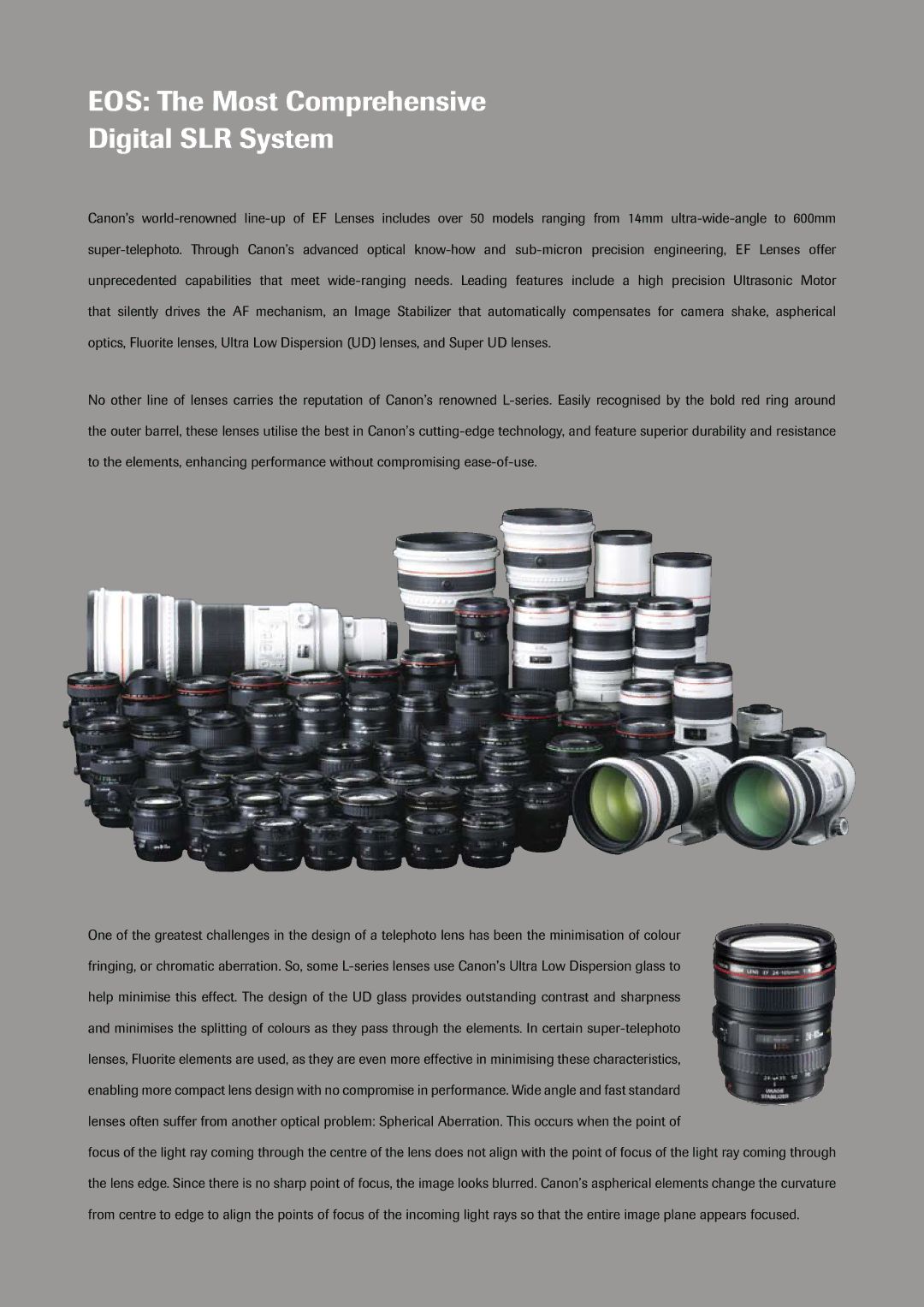EOS: The Most Comprehensive
Digital SLR System
Canon’s world-renowned line-up of EF Lenses includes over 50 models ranging from 14mm ultra-wide-angle to 600mm super-telephoto. Through Canon’s advanced optical know-how and sub-micron precision engineering, EF Lenses offer unprecedented capabilities that meet wide-ranging needs. Leading features include a high precision Ultrasonic Motor that silently drives the AF mechanism, an Image Stabilizer that automatically compensates for camera shake, aspherical optics, Fluorite lenses, Ultra Low Dispersion (UD) lenses, and Super UD lenses.
No other line of lenses carries the reputation of Canon’s renowned L-series. Easily recognised by the bold red ring around the outer barrel, these lenses utilise the best in Canon’s cutting-edge technology, and feature superior durability and resistance to the elements, enhancing performance without compromising ease-of-use.
One of the greatest challenges in the design of a telephoto lens has been the minimisation of colour fringing, or chromatic aberration. So, some L-series lenses use Canon’s Ultra Low Dispersion glass to help minimise this effect. The design of the UD glass provides outstanding contrast and sharpness and minimises the splitting of colours as they pass through the elements. In certain super-telephoto lenses, Fluorite elements are used, as they are even more effective in minimising these characteristics, enabling more compact lens design with no compromise in performance. Wide angle and fast standard lenses often suffer from another optical problem: Spherical Aberration. This occurs when the point of
focus of the light ray coming through the centre of the lens does not align with the point of focus of the light ray coming through the lens edge. Since there is no sharp point of focus, the image looks blurred. Canon’s aspherical elements change the curvature from centre to edge to align the points of focus of the incoming light rays so that the entire image plane appears focused.

